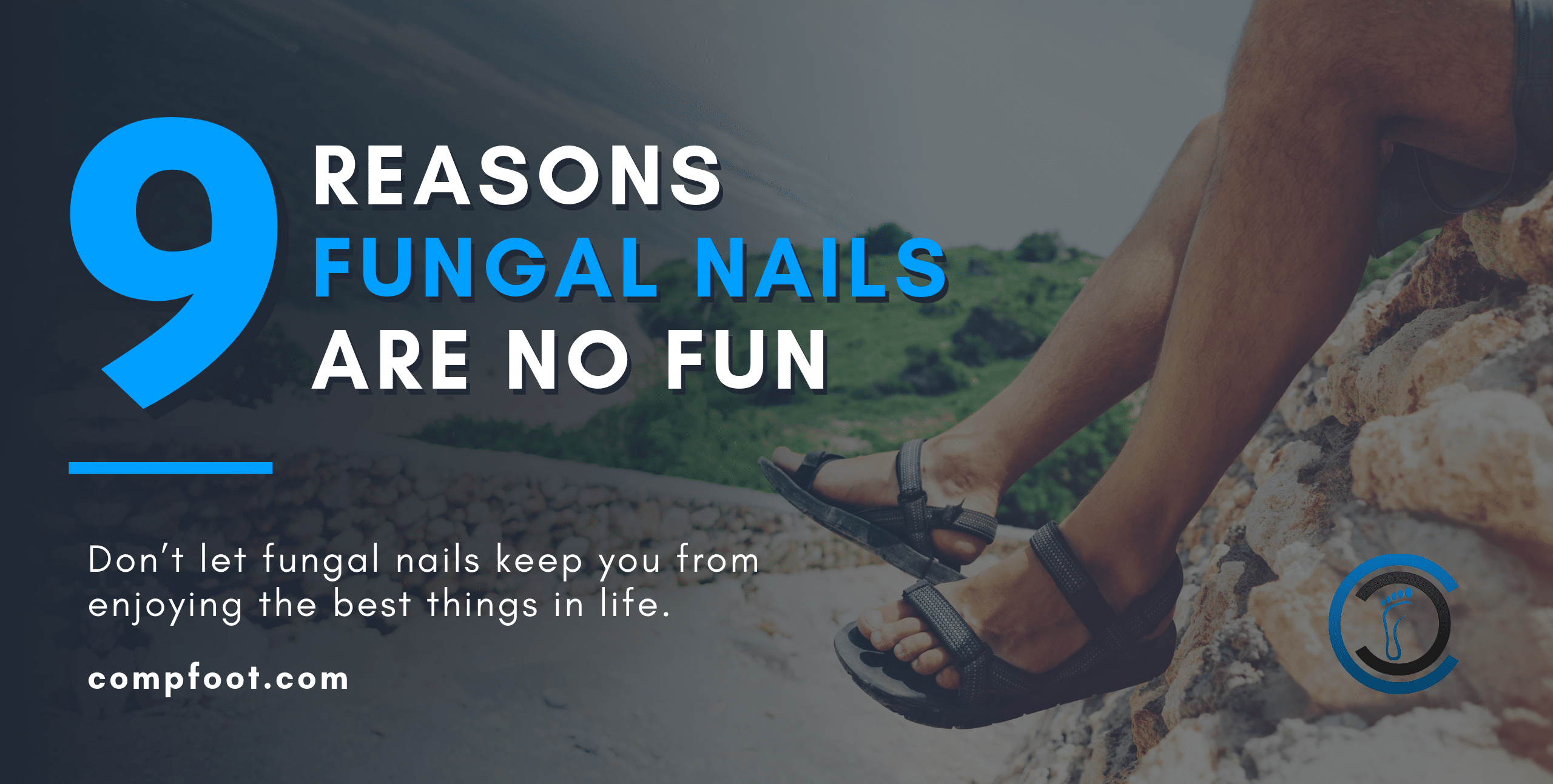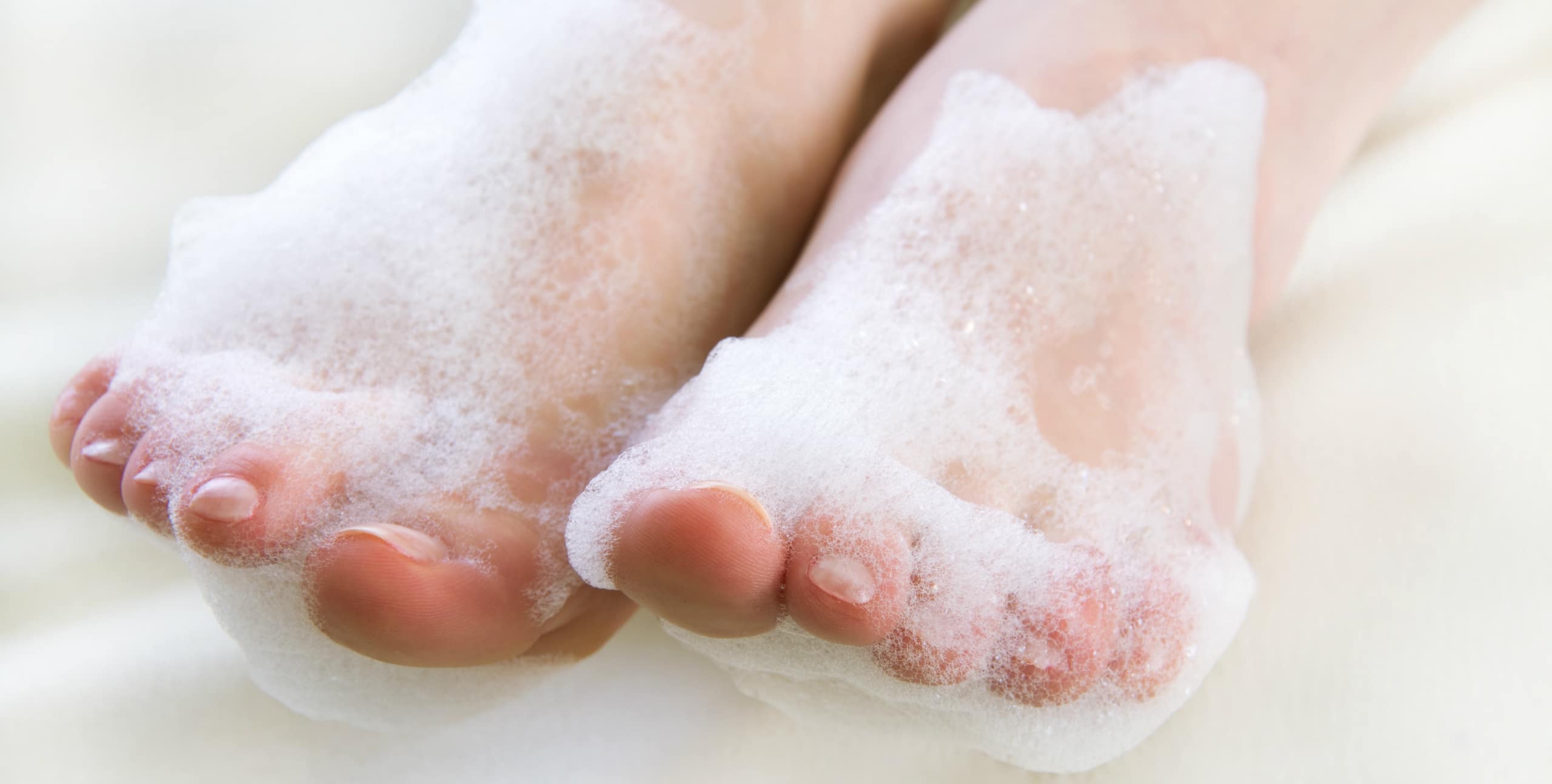9 Reasons Fungal Nails Are No Fun
Are you ready for some summer fun?
Away go the coats. Out come the sunglasses and sandals. Maybe you’ve already got your next trip to the lake all planned out—or you’re just looking forward to relaxing in the backyard or by the pool.
But hang on a minute.
There’s a segment of the population that might be looking toward summer weather with at least a little bit of fear and trepidation—or maybe even embarrassment. And it’s a larger group of people than you might expect.
The issue? Fungal toenail infections.
While in most cases these unsightly infections won’t do anything physically that would hold you back from enjoying your summer, you might think twice before grabbing that pair of sandals or relaxing at Longview Lake Beach.
Honestly, fungal toenails are a pretty effective way to ruin your summer. Despite having “fun” right in the name, they are very much no fun.

Worst Houseguests Ever
Want proof of just how “not fun” these infections are? Let us count the ways.
- They are very unsightly. Trust us: fungal toenails are quite noticeable. For most people, the nail becomes thickened and quite discolored—usually turning a dull yellowish or brownish hue. Often the nail also becomes very ragged and distorted.
- They can sometimes be painful. Although a majority of fungal toenails are not physically painful, they sometimes can be. This might be the case if the warped nail starts to dig into the surrounding flesh, creating an ingrown toenail.
- They can be dangerous, especially if you have diabetes. A nasty fungal toenail infection can open the door to a more serious infection—sometimes so bad that an amputation may be required. This is especially true for people with diabetes, as well as others who may experience poor circulation to the toes.
- They can spread to other nails or even your skin. The fungi that cause these infections belong to a group of organisms called dermatophytes. It’s the same set of fungal species that also cause skin infections like athlete’s foot, jock itch, and ringworm. Through contact, they can spread out and infect other toes and other parts of your body.
- Hiding them all the time can sometimes make the problem worse. We get it—you probably aren’t excited to air out your toes and show off your fungus. But unfortunately, keeping your feet trapped in humid, soggy shoes and socks can encourage the fungus to grow and spread.
- You can’t always prevent them from occurring. True, there actually is a lot you can do to reduce your risk of developing a fungal toenail—which we’ll get to in a minute. But the truth is that you might just have bad luck. A minor nail or skin injury may provide all the opening the fungi need to get underneath and start causing damage.
- They flat out do not go away on their own. You can’t out-wait a case of fungal toenails like you might with a headache or common cold. The fungi will never run out of keratin to digest. If you ignore the problem, it will never get better. It will only get worse. This is a condition that people sometimes live with for decades.
- Home remedies are almost never successful. More bad news, we’re afraid. Topical, over-the-counter antifungals pretty much can’t get past the defense of the damaged nail itself to attack the fungi underneath. It’s theoretically possible if you’re using topicals every day and regularly thinning your nails. But it would take at least a year, and even then success rates are depressingly low.
- They take time to eradicate. One more downer, before we get to the good news. While medical treatments for fungal nails can be highly effective, optimal results will take time. It may take a few months to kill the fungi, and even then the damage they’ve done to the nail that’s already formed will remain. It may take several more months for a healthy, clear nail to replace it.
What Are Your Options?
If You Currently Have Fungal Nails …
If you already have an infection and you want to get rid of it, you really don’t have a choice. You have to seek out a podiatrist who can help you.
Fortunately, as we said, medical treatment options can be highly effective if you are disciplined about them. The “gold standard” treatment involves taking oral antifungal medications for a period of up to about three months. Topical medications and shoe treatments may also be recommended.
Most people tolerate this treatment well, and the cure rates are relatively high if you fully follow through with our recommendations. That said, some people do experience side effects associated with the antifungal pills, so we’ll want to keep a close eye on you and check back once or twice during the treatment program.

If You Don’t Currently Have Fungal Nails, But Are Concerned (or Have Had Them in the Past) …
For starters, if you are currently experiencing any kind of fungal infection on your body (athlete’s foot, ringworm, jock itch, etc.) you should take immediate action to treat them. These can easily spread to the toenails, so the sooner you get rid of them, the better.
Beyond that, while there’s no way to 100% guarantee fungal nails won’t develop in your feet, following these steps can significantly reduce your overall risk:
- Wash your feet with soap and water every day.
- Change socks and shoes when they become damp. Gravitate toward moisture-wicking, breathable fabrics.
- Rotate between pairs of shoes so each can fully dry out before you wear them again.
- Apply antifungal sprays or powders to your feet, as well as your shoes.
- Never go barefoot in public spaces, especially those that are warm and damp—think pools, showers, locker rooms, or saunas. Always have a pair of sandals or shower shoes ready to go.
- Keep your toenails neatly trimmed—but don’t cut them too short or round in the corners.
- Don’t share nail clippers or other toenail care tools, and disinfect them between uses.
- Don’t wear nail polish or artificial nails for weeks on end. (In fact, giving them up entirely would be best.)
- If you like getting pedicures, make sure your preferred salon fully sterilizes all equipment after every guest (ideally in a surgical-grade autoclave), or uses single-use tools.
Are fungal nails threatening to ruin your summer fun? The longer you delay treatment, the harder it will ultimately be to clear them up. So call the Comprehensive Foot Centers, P.A. today at (816) 455-1155 to get started. We have six convenient locations throughout the metro area to serve you!
